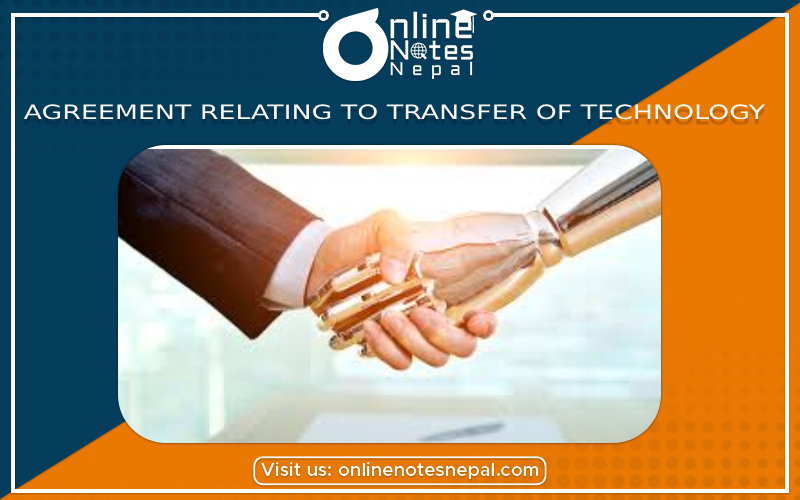Published by: Anu Poudeli
Published date: 08 Aug 2023

A Technology Transfer Agreement (TTA), also known as an Agreement Relating to the Transfer of Technology, is a legal contract that outlines the terms and conditions under which one party (the "licensor" or "transferor") agrees to transfer certain technology, know-how, or intellectual property rights to another party (the "licensee" or "transferee"). This agreement defines both parties' rights and obligations during the process of transferring and employing the technology.
Here are some major components that could be included in a Technology Transfer Agreement:
1.Participants include: Identify the agreement's parties, including their legal names, residences, and contact information.
2.Technology transfer scope: Specify the technology, know-how, or intellectual property that will be transferred. Patents, copyrights, trade secrets, designs, software, and other forms of intellectual property may be included.
3.Scope of Technology Transfer : Specify the scope and constraints of the license that is being issued. Will the licensee have sole rights to utilize the technology in a specific territory or industry? Is there a time limit on the license?
4.Royalties and fees: Outline the agreement's financial terms, including any upfront payments, recurring royalties, or licensing fees that the licensee is required to pay the licensor.
5.Payment terms: Describe the payment schedule and method for royalties and fees. This could be determined by sales, usage, or any other relevant indicator
6.Reporting and audits: Establish the reporting requirements for the licensee, such as giving regular use reports and allowing the licensor to examine these reports to ensure appropriate royalty payments.
7.Warranties and representations: Include any warranties made by the licensor on the transferred technology, such as its accuracy, functionality, and non-infringement of third-party rights.
8.Dispute resolution: Outline processes for resolving disagreements that may develop throughout the agreement's term, such as negotiation, mediation, or arbitration.
9.Term and termination: Specify the length of the agreement as well as the circumstances under which either party may terminate it, such as a breach of terms, bankruptcy, or other predefined occurrences.
10.Governing legislation and jurisdiction: Ascertain the legal jurisdiction that will govern the agreement, as well as any applicable statutes.
11.Force majeure: Specify how unexpected occurrences or situations beyond the parties' control (such as natural catastrophes) will be dealt with.
To guarantee that their individual rights and interests are safeguarded, both parties must carefully analyze and negotiate the terms of a Technology Transfer Agreement. Legal counsel is recommended when drafting a thorough and legally sound agreement that is tailored to the individual conditions and goals of the technology transfer.